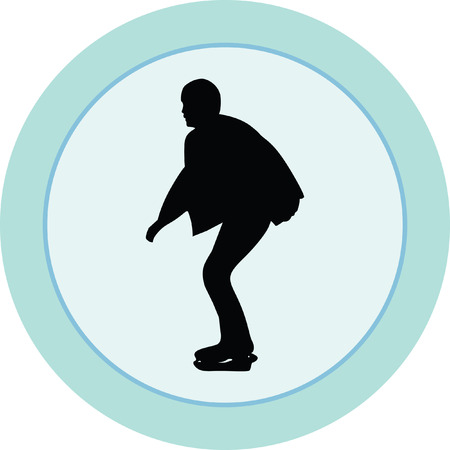How We Chose the Best Hiking Boots
When it comes to picking the top hiking boots for men in 2025, we didn’t just rely on online reviews or marketing hype. Our team of outdoor enthusiasts and experienced hikers took these boots out on real trails across the U.S.—from rocky paths in Colorado to muddy tracks in the Pacific Northwest. We wanted to make sure our recommendations stand up to everything American terrain can throw at them. Here’s a closer look at how we made our picks.
Our Field Testing Process
Every boot on our list was put through its paces in a range of environments: dry desert hikes, rainy forests, steep mountain ascents, and everyday urban walks. Each pair was worn by different testers for at least 30 miles over several weeks. We tracked comfort, durability, traction, waterproofing, breathability, and how each boot handled long distances with a loaded backpack.
Criteria for Selection
| Criteria | Why It Matters |
|---|---|
| Comfort & Fit | No one wants blisters or sore feet halfway through a hike—boots need to feel good all day long. |
| Durability | Hiking boots are an investment; they should last for seasons, not just a few trips. |
| Traction | Slippery rocks and muddy hills require soles that grip well and keep you upright. |
| Waterproofing | Your feet should stay dry when crossing streams or hiking in the rain. |
| Breathability | No one likes sweaty feet, especially during hot summer treks. |
| Weight | Lighter boots reduce fatigue but still need to offer enough support and protection. |
| Support & Stability | Ankle support and a solid build help prevent injuries on uneven ground. |
| Value for Money | The best boots balance price and performance—they shouldn’t break the bank. |
The Team Behind the Reviews
Our team is made up of lifelong hikers, certified wilderness guides, and outdoor gear nerds based all over the United States. Combined, we have decades of experience exploring America’s national parks and wild places. We’ve suffered from bad boots in the past—so we know exactly what makes a great hiking boot worth recommending to fellow adventurers like you.
2. What to Look For in Hiking Boots
Picking the right hiking boots can make or break your outdoor adventure. Whether you’re hitting the rocky switchbacks in the Rockies, exploring muddy Pacific Northwest trails, or taking on dry desert paths in Arizona, it’s important to find boots that match both your needs and the unique challenges of American trails. Here’s a straightforward guide to the essentials:
Fit: The Foundation of Comfort
Your boots should feel snug but not tight, with enough room to wiggle your toes and no heel slippage. A good fit helps prevent blisters and keeps you comfortable mile after mile.
Fit Checklist
| What to Check | Why It Matters |
|---|---|
| Toe Room | Prevents black toenails on descents |
| Heel Hold | Stops blisters from rubbing |
| Width Options | Keeps feet from feeling cramped or sliding around |
Support: Stability for Every Step
If you’re carrying a heavy pack or navigating uneven terrain, look for boots with solid ankle support and a sturdy midsole. This helps protect against twists and sprains on unpredictable ground.
Support Features to Consider
- Ankle height: Mid or high-cut boots offer more stability for rough trails.
- Cushioned midsoles: Absorb shock and reduce fatigue during long hikes.
- Lacing systems: Allow for custom adjustments to lock in your fit.
Materials: Balancing Weight and Durability
The right materials keep your feet comfortable in all climates. Here’s a quick rundown of popular options:
| Material | Main Benefits | Best For |
|---|---|---|
| Full-Grain Leather | Super durable, great waterproofing once broken in | Tough, rocky trails; long backpacking trips |
| Synthetic (Nylon/Mesh) | Lighter weight, dries faster, often less expensive | Warm climates; day hikes; casual use |
| Nubuck Leather | Softer feel than full-grain, decent durability, flexible fit | Mixed terrain; hikers who want comfort and performance balance |
Waterproofing: Keep Your Feet Dry Anywhere in the US
If you hike where rain, puddles, or creek crossings are common—think Appalachian Trail or Pacific Crest Trail—waterproof boots are a game-changer. Look for Gore-Tex® linings or proprietary waterproof membranes. Just remember: fully waterproof boots can run warm in hot weather.
Traction: Grip for All Terrains
A reliable sole is key for safety, especially on loose gravel, wet rocks, or muddy slopes. Vibram® soles are a popular choice for their grip and durability. Deep lugs help bite into soft ground and shed mud quickly.
Sole Types Comparison Table
| Sole Type | Main Benefit | Ideal Terrain |
|---|---|---|
| Aggressive lugs | Superior grip on steep/muddy paths | PCT, AT, mountain trails |
| Smooth/Moderate tread | Lighter weight, good for flat/packed trails | Desert hikes, urban parks |
Durability: Built to Last Through Any Adventure
The best hiking boots are an investment—look for reinforced stitching, quality eyelets/hooks, and thick outsoles that won’t wear down quickly. Well-built boots can handle everything from sharp granite in Yosemite to volcanic soil in Hawaii.
Your Essentials Checklist for US Trails:
- Fit that matches your foot shape and volume
- Ankle/midsole support based on pack weight and trail conditions
- Materials suited to local weather
- Waterproofing if you expect wet conditions
- Soles with traction specific to your favorite terrains
- Tough construction that stands up to miles of use
The right pair from our top 10 list will check these boxes so you can focus on enjoying America’s wild places instead of worrying about sore feet or soggy socks.
![]()
3. The Top 10 Hiking Boots for Men in 2025
We hit the trails, tackled rough terrain, and put these boots through their paces to bring you our top picks for 2025. Whether youre a weekend warrior or a backcountry explorer, check out our detailed reviews below. We break down the key pros and cons, pricing info, and the types of hikes or terrain each boot is best for—so you can find the perfect fit for your next adventure.
| Boot | Best For | Pros | Cons | Price Range |
|---|---|---|---|---|
| Salomon X Ultra 5 Mid GTX | Lightweight Day Hikes, Wet Terrain | Excellent grip, light feel, waterproof Gore-Tex lining | Narrow fit, minimal ankle support for heavy loads | $180-$200 |
| Merrell Moab 3 Mid Waterproof | Casual Trails, Beginners | Affordable, comfortable out of the box, roomy toe box | Slightly heavy, moderate durability on rocky terrain | $120-$140 |
| Keen Targhee IV Waterproof | Muddy & Rugged Trails | Wide fit, sturdy sole, reliable waterproofing | Can feel bulky, less breathable in hot weather | $160-$180 |
| Lowa Renegade GTX Mid | Backpacking, Multi-Day Trips | Great ankle support, durable leather build, proven track record | Takes time to break in, higher price point | $250-$270 |
| HOKA Anacapa Mid GTX | Long Distance Comfort, Urban-to-Trail Hikes | Cushioned ride, lightweight design, good for sensitive feet | Chunky look isn’t for everyone, runs warm in summer | $185-$210 |
| Vasque Breeze LT NTX Mid | Warm Weather Hiking, Fast Packing | Very breathable mesh upper, eco-friendly materials, nimble feel | Less protection from rocks and roots, not ideal for cold/wet conditions | $150-$170 |
| The North Face VECTIV Exploris 2 Mid Futurelight | Rocky Terrain, Technical Trails | Stable platform, aggressive tread pattern, modern styling | Slightly stiff at first wear, not as cushioned as others on this list | $170-$190 |
| Danner Mountain 600 EVO GTX | Packed Trails & Everyday Use | Classic style, great cushioning underfoot, flexible sole | Softer sole wears faster on sharp rocks | $210-$230 |
| La Sportiva Nucleo High II GTX | Alpine & Steep Ascents | Amazing traction on loose rock/scree, lightweight for category | Tighter fit may not suit wide feet | $215-$235 |
| Columbia Newton Ridge Plus II Waterproof Amped | Bargain Hunters & Light Trail Use | Budget-friendly price point, easy break-in period | Simpler design means less support/durability over time | $90-$110 |
How to Choose Your Next Pair of Hiking Boots?
If you’re still unsure which pair fits your needs best, think about where you’ll hike most often—rocky mountain passes require more ankle support and tougher soles than rolling forest trails. Also consider if you prefer a lighter shoe that moves fast or a burly boot that can handle heavy packs. Don’t forget to try boots on with your favorite hiking socks to make sure they feel just right before hitting the trail!
4. Pro Tips for Breaking In and Caring for Hiking Boots
Scoring one of the top 10 hiking boots for men is just the beginning—the real adventure starts with making sure your new boots fit like a glove and last for years. Here’s some straight-from-the-trail advice from seasoned American hikers on breaking in your boots, keeping them comfortable, and ensuring they’re always ready to hit the trail.
How to Break In Your New Hiking Boots
Nobody wants blisters or sore feet miles from the trailhead. Breaking in your boots properly is key to comfort and performance. Here’s a quick guide:
| Step | What To Do | Pro Tip |
|---|---|---|
| 1. Wear Around Home | Lace up and walk indoors for short periods. | Wear the socks you’ll use on hikes. |
| 2. Short Outdoor Walks | Take your boots outside—try neighborhood strolls or easy park trails. | Add a loaded daypack to mimic real conditions. |
| 3. Increase Distance & Terrain | Tackle longer walks and varied surfaces (gravel, grass, slight inclines). | Listen to your feet: stop if you feel hot spots. |
| 4. Trail Test | Go for a short hike on familiar trails before any big adventure. | Break in both boots evenly by alternating pairs if possible. |
Caring for Your Hiking Boots: Keep Them Trail-Ready
A good pair of hiking boots is an investment, so treat them right! Here’s how American hikers keep their favorites performing season after season:
Cleaning After Every Hike
- Brush Off Dirt: Use a soft brush to remove mud and debris as soon as you’re off the trail.
- Mild Soap & Water: Wipe down with a damp cloth—no harsh chemicals needed!
- No Direct Heat: Let boots air dry naturally; never put them near a heater or in direct sunlight.
Waterproofing & Conditioning
- Check Waterproofing: Most boots need reproofing every few months or after heavy use—use products recommended by the manufacturer.
- Leather Care: Condition full-grain leather with specialty creams to prevent cracking and stiffness.
Packing & Storage Tips
- Store Dry: Always dry boots completely before storing to avoid mildew and odors.
- Shoe Trees or Stuffed Newspaper: Help maintain shape and absorb leftover moisture.
- Avoid Compressed Spaces: Don’t squish them under heavy gear—give them room to breathe!
Your Boots, Your Adventure
The better you break in and care for your hiking boots, the more epic adventures you’ll enjoy together. Treat them right, and they’ll take you further—mile after mile, season after season.
5. FAQ: Choosing and Using Your Hiking Boots
What should I look for in a great pair of hiking boots?
When picking hiking boots, focus on fit, comfort, support, and durability. The best boot for you depends on your hiking style (day hikes vs. backpacking), the terrain (desert trails, rocky mountains, or muddy forests), and the season. Make sure to try them on with the socks you’ll use and check for enough toe room and snug heels.
How do I break in new hiking boots?
Breaking in your boots is essential to avoid blisters. Start by wearing them around the house, then take short walks outside before hitting the trail. Gradually increase distance and difficulty. Most US hikers recommend at least 10-15 miles of walking before attempting a full-day hike in new boots.
Should I choose waterproof or non-waterproof boots?
This depends on where you hike most often:
| Condition | Waterproof Boots | Non-Waterproof Boots |
|---|---|---|
| Wet, muddy trails | Recommended | Not ideal |
| Hot, dry climates | Can get sweaty | Breathe better |
| Casual day hikes | If crossing streams | Lighter & cooler |
Many American hikers carry lightweight gaiters for extra protection in wet conditions.
What’s the difference between hiking boots and trail runners?
Hiking boots offer more ankle support and durability for rough terrain or carrying heavy packs. Trail runners are lighter, more flexible, and ideal for well-groomed trails or fast-paced hikes. If you’re hiking classic US trails like the Appalachian Trail or Pacific Crest Trail, you’ll see both styles—choose what feels best for your feet and adventure.
How do I maintain my hiking boots?
- Always clean mud and dirt after each hike—use a brush and lukewarm water.
- Dry them at room temperature; never put them next to direct heat sources.
- Treat leather boots with conditioner to prevent cracking.
- If your boots have removable insoles, take them out to air dry after every hike.
Are there any trail etiquette tips related to footwear?
Absolutely! In US hiking culture, it’s common courtesy to stomp off excess mud before entering shelters or public areas. Always stay on marked trails—even if it’s muddy—to protect sensitive environments. If your boots are especially dirty, use public boot brushes at popular trailheads when available.
Quick Reference: Key Boot Features
| Feature | Benefit on US Trails |
|---|---|
| Ankle Support | Helps prevent sprains on rocky or uneven paths common in national parks |
| Lugged Outsole | Improves traction on loose soil or steep descents found throughout North America |
| Padded Tongue/Collar | Adds comfort during long days hiking classic routes like Yosemite or Zion |
| Protective Toe Cap | Saves toes from roots and rocks on technical trails like those in the Rockies or Appalachians |
If you still have questions about selecting your perfect pair from our “Top 10 Hiking Boots for Men: Field-Tested Reviews for 2025,” ask a local outfitter—they know which brands work best for your favorite regional trails!


